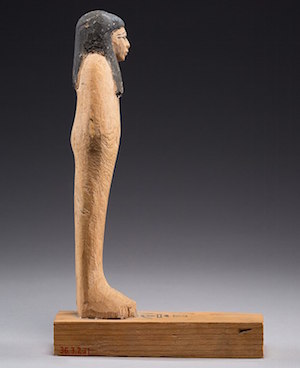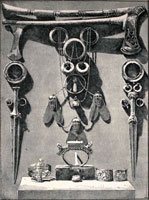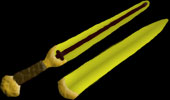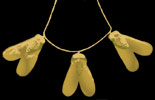
Queen Ahhotep I was the daughter of Queen Tetisheri, the wife of her brother Seqenenre Taa II, and the mother of Ahmose I and Queen Ahmose Nefertari. She is also thought to have been the mother of the princes Ahmose Sipair and Binpu and the princesses Ahmose-Henutemipet, Ahmose-Nebetta, Ahmose-Meritamun, and Ahmose-Tumerisy.
Sequenenre Taa was killed fighting the Hyksos and was succeeded by Kamose, once thought to his son but now generally considered to be his brother or a prominent soldier in his army. When he too was killed fighting the Hyksos, Ahhotep rallied the troops and maintained the pressure on the invaders until her son Ahmose was old enough to take over.

There was a break in hostilities for a few years while she held the reins, but it is very likely that she took up arms during the early part of her regency to protect her son’s position. A stele in Karnak temple records her service to the nation, stating:

“The king’s wife, the noble lady, who knew everything, assembled Kemet. She looked after what her Sovereign had established. She guarded it. She assembled her fugitives. She brought together her deserters. She pacified her Upper Egyptians. She subdued her rebels, The king’s wife Ahhotep given life”.

When Ahmose succeeded in expelling the Hyksos, he led his army to Nubia to regain lost territories. While he was gone, a group of Hyksos sympathisers tried to steal the throne.

Ahhotep foiled this attempt, and was awarded the “golden flies of valour” by her son. He also gave her a cache of beautiful jewellery and ornamental weaponry which was found in a tomb at Dra Abu el-Naga near the Valley of the Kings. Her original tomb has not been discovered.
Bibliography
- Bard, Kathryn (2008) An introduction to the Archaeology of Ancient Egypt
- Bryan, Betsy M (2000) “The 18th Dynasty Before The Amarna Period”, in The Oxford History of Ancient Egypt Ed I. Shaw
- Capel, Anne K and Markoe Glenn E. Editos (1996) Mistress of the House, Misteress of Heaven
- Dodson, Aidan and Hilton, Dyan (2004) The Complete Royal Families of Ancient Egypt
- Robins, Gae (1993) Women in Ancient Egypt
- Tyldesley, Joyce (2006) Queens of Egypt
Copyright J Hill 2010